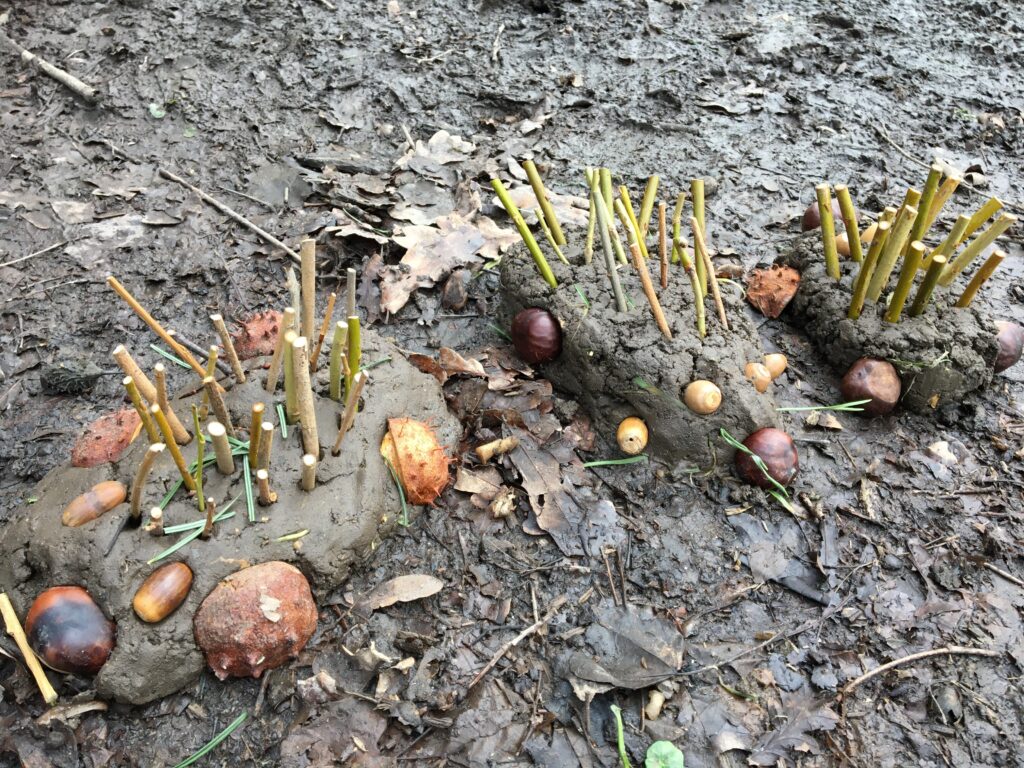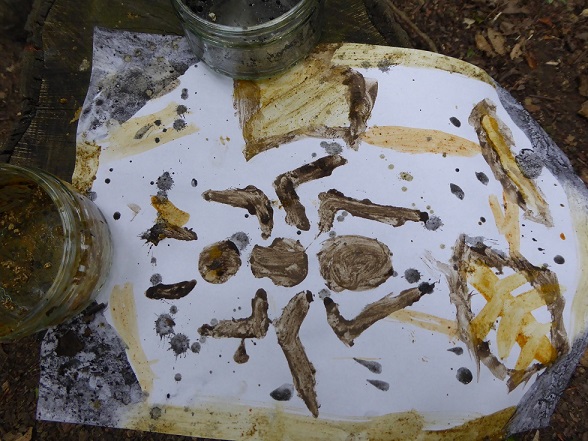Welcome back nature explorers – I hope you enjoyed meeting a few wiggly worms and learnt how important and amazing they are. It’s time to pull on your welly boots, jump outdoors and get muddy again!
Mud, mud, glorious mud – it’s free, easy to use and can be found pretty much anywhere. Okay, its messy but that’s why its super fun! Firstly, you need to find a nice muddy patch. Here are some mud-fabulous activity ideas about how you can use it to create your own artwork.
Mud sculptures: Molehill soil is perfect for modelling. Soft, crumbly and damp the soil holds and sticks together well when squashed into a ball. Small plastic fruit punnets make great moulds to make bodies for hedgehogs, dinosaurs or giant insects. Or turn a molehill into a mud-castle using plant or yogurt pots as moulds to make towers.

Decorate your sculpture with natural objects such as sticks, stones and plant materials like acorns and fir cones. Pine needles make lovely whiskers. What does your mud creature like to eat?
If your sculpture is made with just natural materials then it can be left to return to the earth for the worms. No molehills – then you can mix up your own soil mixture – make sure its not too wet or too dry.
I-spy: Animal footprint tracks are often found in mud. Look for a nice muddy patch that’s not too wet and practice identifying signs by making your own animal footprints. The heel of a hand makes a good palm pad impression and fingers for toe pads. Sticks can be used to make claw prints. Then challenge your family to guess each other’s tracks.
You can also use a large sheet of paper or the back of a roll of spare wallpaper, to paint mud footprint trails. Cut out cardboard templates and use mud sponged around the edge; then carefully lift to reveal the print shape. Or you can use a paint brush – but using fingers and hands is more fun!
Mud painting: The colour of mud can vary hugely, from yellow ochre, dark umber and rich red sienna’s – all colours which were traditionally derived from mud. Experiment to make your own range of mud paints. Add and mix ground up white chalk or charcoal to a small pot of mud; thin with water – paint onto white card or watercolour paper. Can you make light and dark shades? Look for sticky grey or yellow clay soil to make new colours. How many different colours can you make?
Top tip: use an old flour sieve to push through your mud paint to remove small stones and grit to make a smooth paint. You can also add a small squirt of washing up liquid to give your soil paint a beautiful sheen.

Messy fun tips: When creating art with mud, have plenty of water nearby, mixing sticks and spades. Mud and water really go hand in hand, and only adds to the fun. Make sure old or protective clothes are worn and that hands are thoroughly washed afterwards. Cuts on hands should be covered with a plaster.
Have fun exploring!
Wild Heritage 2021
